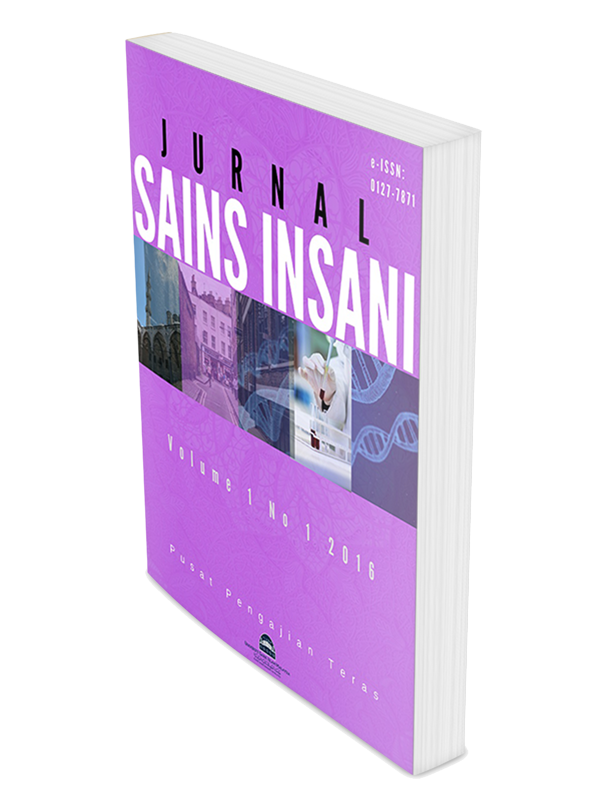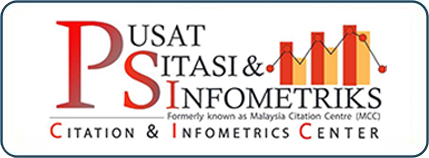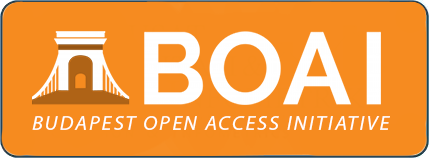Tahap Kefahaman Mengenai Kenyataan Berbaur Kebencian di Media Sosial dalam Kalangan Masyarakat Malaysia
Level of Understanding Regarding Hate Speech on Social Media within Malaysians
DOI:
https://doi.org/10.33102/sainsinsani.vol9no2.705Keywords:
Kata kunci: kenyataan berbaur kebencian, keselamatan negara, perpaduan, media sosial, tahap kefahamanAbstract
Abstrak: Fenomena penyebaran ucapan berbaur kebencian di media sosial semakin berleluasa dari semasa ke semasa seolah-olah para pelaku tidak memahami konteks ucapan berbaur kebencian dan implikasinya terhadap keharmonian negara. Justeru, kajian ini bertujuan untuk meneliti tahap kefahaman masyarakat Malaysia terhadap kenyataan berbaur kebencian di media sosial yang boleh menjadi ancaman serius terhadap kestabilan sosial dan keselamatan negara. Kajian ini menggunakan kaedah penyelidikan gabungan kualitatif dan kuantitatif. Kaedah kualitatif yang melibatkan pengaplikasian teknik perbincangan kumpulan berfokus (FGD) telah dijalankan untuk membangunkan instrumen kajian. Kaedah kuantitatif pula dilaksanakan melalui teknik tinjauan yang melibatkan 907 responden dari seluruh negeri di Malaysia. Para responden terdiri daripada pengguna media sosial, mencakupi pelbagai etnik dan agama berdasarkan kepada pensampelan rawak bersistematik. Selain itu, dapatan kajian ini diperkukuhkan dengan data yang diperoleh melalui teknik temu bual. Secara keseluruhan, hasil kajian mendedahkan bahawa masyarakat Malaysia mempunyai tahap kefahaman yang tinggi mengenai kenyataan berbaur kebencian. Walau bagaimanapun, terdapat variasi dalam tahap kefahaman terhadap pelbagai aspek kenyataan berbaur kebencian. Dalam hal ini, penemuan kajian ini bukan sekadar menyumbang kepada literatur sedia ada, tetapi juga turut membuka ruang kepada pendekatan inovatif oleh pihak bertanggungjawab dalam menangani kenyataan berbaur kebencian secara lebih bersasar bagi memastikan kestabilan dan keharmonian sosial dalam negara yang berbilang kaum dan agama terpelihara.
Abstract: The spread of hate speech on social media is becoming increasingly widespread, as if the perpetrators do not understand the context of hate speech and its implications for national harmony. Therefore, this study aims to examine the level of understanding among Malaysians regarding hate speech on social media, which can pose a serious threat to social stability and national security. This study employs a mixed-methods research approach, combining both qualitative and quantitative methods. The qualitative method involved the application of focus group discussion (FGD) techniques to develop the research instrument. The quantitative method was conducted through a survey involving 907 respondents from across Malaysia. The respondents consisted of social media users from various ethnicities and religions, based on systematic random sampling. Additionally, the findings of this study are reinforced by data obtained through interview. Overall, the results reveal that Malaysians have a high level of understanding regarding hate speech. However, there are variations in the level of understanding concerning different aspects of hate speech. In this regard, the findings of this study not only contribute to the existing literature but also open the door to innovative approaches by relevant authorities in addressing hate speech more effectively to ensure the stability and social harmony of a multiethnic and multireligious nation are preserved.
Downloads
References
Article 19. (2023). Malaysia: Countering hate speech. https://www.article19.org/resources/malaysia-countering-hate-speech/
Azman N. F, & Zamri N. A. K (2022). Conscious or Unconscious: The Intention of Hate Speech in Cyberworld—A Conceptual Paper. Proceedings, 82(1), 29.
Bayer, J., & Bard, P. (2020). Hate speech and hate crime in the EU and the evaluation of online content regulation approaches. https://www.europarl.europa.eu/RegData/etudes/STUD/2020/655135/IPOL_STU(2020)655135_EN.pdf
Bernama, (2024). 1,454 kandungan 3R dalam media sosial diturunkan setakat ini. https://www.mcmc.gov.my/ms/media/press-clippings/1-454-kandungan-3r-dalam-media-sosial-diturunkan-s
Bleich, E. (2017). Freedom Of Expression Versus Racist Hate Speech: Explaining Differences Between High Court Regulations In The USA and Europe. In Marcel, M. & Ralph, G. (Eds.), Regulation of Speech in Multicultural Societies (pp. 110–127). Routledge.
Delgado, R. (1982). Words that Wound: A Tort Action for Racial Insults, Epithets, and Name-Calling, Harvard Civil Rights-Civil Liberties Law Review, 17, 135-140. https://papers.ssrn.com/sol3/papers.cfm?abstract_id=2000918
Siti Aidah Lukin @ Lokin, Mohd Sohaimi Esa, Abang Mohd Razif Abang Muis and Romzi Ationg, Budi Anto Mohd Tamring, Irma Wani Othman & Saifulazry Mokhtar. (2021). Kaedah dan cabaran dalam mengurus hubungan etnik di Malaysia. International Journal of Law, Government and Communication, 6(23), 115-124. https://eprints.ums.edu.my/27629/
Farhana. (5 September 2024). 123 peratus isu 3R direkod pada suku pertama 2024. Sinar Harian. https://www.sinarharian.com.my/article/658602/berita/semasa/123-peratus-isu-3r-direkod-pada-suku-pertama-2024
Fernández, A.M. and Johan Farkas, J. (2021). Racism, Hate Speech, and Social Media: A Systematic Review and Critique. Television & New Media, 22(2), 205-224.
Hafiz Yatim. (13 Ogos 2010). Bakar gereja: Adik-beradik dipenjara 5 tahun. Malaysiakini. https://www.malaysiakini.com/news/139946
Hakim, L. (21 September 2023). Anti-Hate Speech law must be balanced with right to speech, say lawyers. NST Online. https://www.nst.com.my/news/nation/2023/09/958045/anti-hate-speech-law-must-be-balanced-right-speech-say-lawyers
Hazlin Hassan, (27 September 2019). Death of Malaysian fireman injured during rioting at Hindu temple caused by unknown persons. The Strait Times. https://www.straitstimes.com/asia/se-asia/death-of-malaysian-fireman-injured-during-selangor-hindu-temple-riot-caused-by-persons
Hoi, N. K., & Joh, T. S. (2023). Exploring the social and cultural implications of hate speech on Facebook in Malaysia. Sains Humanika, 16(1), 19–31.
Howard, E. (2017). Freedom Of Expression and Religious Hate Speech In Europe. Routledge
Husni, H. (2019). Moderate Muslims’ Views on Multicultural Education, Freedom Of Expression, And Social Media Hate Speech: An Empirical Study In West Java Indonesia. Jurnal Penelitian Pendidikan Islam, 7(2), 199–224.
Ismail, M.M. (2020). Dinamika integrasi politik melalui kerjasama politik di Malaysia: Teras kepada tapak integrasi masyarakat multi-etnik. Malaysian Journal of History, Politics & Strategy, 47(3), 332-358.
Jalli, N. (2024). Disinformation and hate speech: Ethnoreligious rhetoric on TikTok during Malaysia’s 15th general election (GE15) 2022. https://shareok.org/handle/11244/340152
Kambol, R. (2023). Menangani isu–isu sensitif berkaitan, agama, bangsa dan institusi raja (3R) dalam politik melalui pendekatan undang-undang: Suatu penilaian semula. Journal of Law and Governance, 5(1), 86-104.
Kang, M., Lee, J., & Park, S. (2020). Meta-Analysis on Hate Speech Studies in South Korea. In Hate Speech in Asia and Europe. Routledge
Kasim, A., & Awan Ismail, C. W. (2022). Etika dan peraturan media sosial: Kajian sekatan facebook terhadap media di Malaysia. International Journal of Law, Government and Communication, 7(28), 296-314.
Khan, H. W., Fatima, M. F., Sheikh, M. K., & Ahmed, M. K. (2023). Hate speech and ridiculing Islam: An overview in the context of freedom of expression. Journal of Positive School Psychology, 1233-1250.
Kok, T. (2023, June 21). Fight hate speech: Need for strong laws, education. Malaysiakini. https://www.malaysiakini.com/columns/669481
Macklin, G. (2019). The Christchurch Attacks: Livestream Terror in the Viral Video Age. Combating terrorism center. Combating Terrorism Center. https://ctc.westpoint.edu/christchurch-attacks-livestream-terror-viral-video-age/.
Mainack, M. (2017). A Measurement Study of Hate Speech in Social Media. HT'17: Proceedings of the 28th ACM conference on Hypertext and social media, 85-94. https://vbn.aau.dk/en/publications/proceedings-of-the-28th-acm-conference-on-hypertext-and-social-me
Matsuda, M.J. (1989). Public Response to Racist Speech: Considering the Victim's Story, Michigan Law Review, 8, 2320-2381. https://repository.law.umich.edu/mlr/vol87/iss8/8
Mayasari, L. D., & Cahya, A. A. (2021). Hate Speech in Maqasid Sharia Perspective. Jurnal Hukum dan Sosial, 1(1), 1-24.
Mohamed Farid Noh. (16 Februari 2020). Suspek pijak al-Quran, hina Islam direman tiga hari. BH Online. https://www.bharian.com.my/berita/kes/2020/02/656066/suspek-pijak-al-quran%C2%A0hina-islam-direman-tiga-hari
Morada, N. M. (2021). Myanmar. Journal of International Peacekeeping, 24(3–4), 428–466.
Multicultural NSW. (2023). Remove Hate From The Debate. https://multicultural.nsw.gov.au/community-resilience/remove-hate-from-the-debate/
Nakamura, D. (2023). Gunman sentenced to life in prison for Buffalo massacre of Black victims. The Washington Post. https://www.washingtonpost.com/national-security/2023/02/15/buffalo-shooting-gendron-sentencing/
Neshkovska, S. & Trajkova, Z. (2018). The Essential of Hate Speech. The international Journal of Education, 16(1), 71-80.
Neshkovska, S. (2017). The Essentials of Hate Speech. International journal of Education Teacher, 14. 71-79.
Norena Abdul Karim Zamri, NurNasliza Arina Mohamad Nasir, Mohammad Nurhafiz Hassim & Syaza Marina Ramli (2023) Digital hate speech and othering: The construction of hate speech from Malaysian perspectives, Cogent Arts & Humanities, 10(1), 2229089, DOI: 10.1080/23311983.2023.2229089
Rahim, R. A., Razak, M. I. A., & Pawi, A. A. (2022). Hujah Perbincangan Peristiwa Bom Bali Dalam Sorotan: Satu Analisis Dari Perspektif Islam. Jurnal Pusat Penataran Ilmu Dan Bahasa, 33(2), 1–20. https://doi.org/10.51200/manu.v33i2.4116
Rahmat Hendrawan, A & Said A. F. (2020). Multilabel Classification of Hate Speech and Abusive Words on Indonesian Twitter Social Media. International Conference on Data Science and Its Applications (ICoDSA), Bandung, Indonesia, 1-7. https://doi.org/10.1109/ICoDSA50139.2020.9212962
The Centre (2019). Malaysia Perlu Pendekatan Baru Untuk Tangani Masalah Ucapan Kebencian. https://www.centre.my/post/pendekatan-baru-tangani-ucapan-kebencian.
The European Commission Against Racism and Intolerance. (2016). ECRI general policy recommendation no. 15 on combating hate speech. https://rm.coe.int/ecri-general-policy-recommendation-no-15-on-combating-hate-speech/16808b5b01
Tontodimamma, A., Nissi, E., Sarra, A. (2021). Thirty years of research into hate speech: Topics of interest and their evolution. Scientometrics, 126, 157–179. https://doi.org/10.1007/s11192-020-03737-6
United Nations. (2019). UN Strategy and Plan of Action on Hate Speech. https://www.un.org/en/genocideprevention/documents/UN%20Strategy%20and%20Plan%20of%20Action%20on%20Hate%20Speech%2018%20June%20SYNOPSIS.pdf
United Nations. n.d. Hate Speech. https://www.un.org/en/hate-speech/understanding-hate-speech/what-is-hate-speech#:~:text=To%20provide%20a%20unified%20framework,person%20or%20a%20group%20on
Waldron, J. (2012). The Harm in Hate Speech. Harvard University Press.
Walker, T. (2023, August 30). Analysts: Hate speech normalized during Malaysia elections. Voice of America. https://www.voanews.com/a/analysts-hate-speech-normalized-during-malaysia-elections-/7247592.html
Wan Mohd Nor, M., & Gale, P. (2021). Growing Fear Of Islamisation: Representation Of Online Media In Malaysia. Journal of Muslim Minority Affairs, 41(1), 17– 33.
Wordpress. (22 April 2019). Serangan Bom Di Sri Lanka Dan Kesannya Terhadap Keselamatan Negara. Wordpress. https://seribuombak.wordpress.com/2019/04/22/serangan-bom-di-sri-lanka-dan-kesannya-terhadap-keselamatan-negara/
Yusof, F., & Hassan, M. S. (2020). Kes penghinaan Raja-Raja/Yang Di-Pertuan Agong di media sosial: Tindakan dan penguatkuasaan undang-undang dalam kebebasan bersuara. Journal of Law and Governance, 3(1), 127-142.
Zamri, N. A. K., Mohamad Nasir, N. A., Hassim, M. N., & Ramli, S. M. (2023). Digital Hate Speech And Othering: The Construction Of Hate Speech From Malaysian perspectives. Cogent Arts & Humanities, 10(1). https://doi.org/10.1080/23311983.2023.2229089
Downloads
Published
How to Cite
Issue
Section
License
Copyright (c) 2024 Ku Hasnita Ku Samsu, Mohd Mahadee Ismail, Yok Fee Lee, Ratna Roshida Ab Razak, Arfah Ab Majid, Mohd Sabri Md. Nor, Zatul Himmah Adnan

This work is licensed under a Creative Commons Attribution 4.0 International License.
1. Author holds the copyright of the article.
2. Jurnal Sains Insani owns the rights to publish the article. The writer may request permission to republish the article from the editor.
3. Jurnal Sains Insani follows the APA (American Psychological Association) style for all in-text citation and list of bibliographies.











